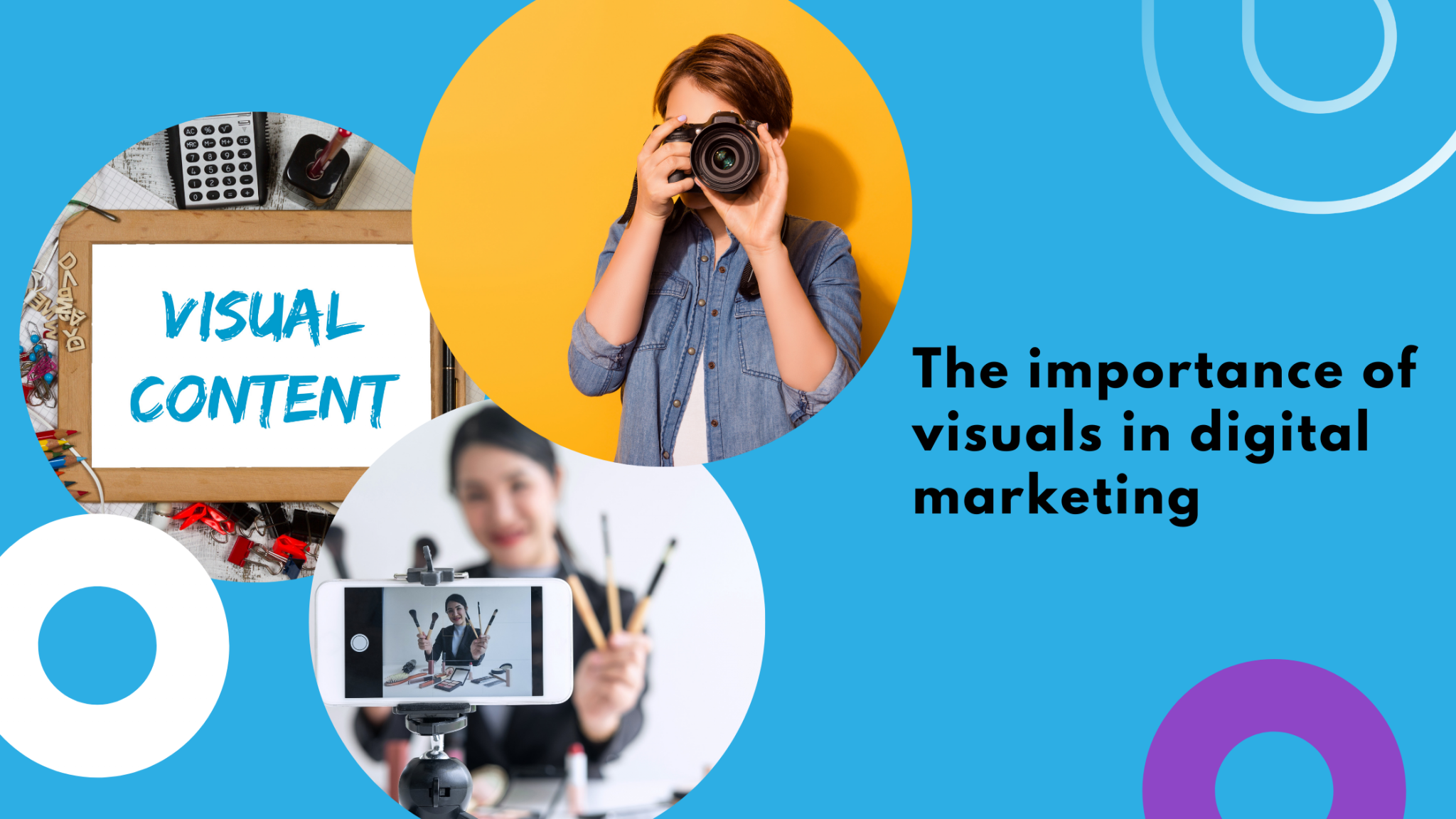In the fast-paced digital landscape, capturing and retaining the attention of your audience is more challenging than ever. With countless brands vying for visibility, how can you make your content stand out? The answer lies in visual content. From social media posts to website design, visual elements play a crucial role in enhancing your marketing efforts. This blog explores the significance of visual content in digital marketing and offers insights on how to effectively incorporate it into your strategy.

Table of Contents
Toggle1. The Power of First Impressions
Visual content is often the first thing a potential customer sees when they encounter your brand online. According to studies, people make judgments about a brand within the first few seconds of viewing its content. Eye-catching visuals can create a strong first impression, making users more likely to engage with your brand.
Tip: Use high-quality images and videos that reflect your brand’s identity. Whether it’s through professional photography, infographics, or engaging videos, ensuring your visuals are visually appealing can set the tone for positive brand perception.
2. Enhancing Engagement
Content that includes visuals is known to generate higher levels of engagement compared to text-only content. Social media posts with images receive 650% higher engagement than those without. Visuals can evoke emotions, tell stories, and prompt users to take action, whether it’s liking, sharing, or commenting.
Tip: Incorporate various types of visual content such as infographics, memes, and GIFs. This not only keeps your audience engaged but also encourages them to share your content, expanding your reach.
3. Facilitating Information Retention
The human brain processes visuals 60,000 times faster than text. This means that users are more likely to remember information presented visually. Incorporating visuals into your content strategy can significantly improve information retention and understanding.
Tip: Use infographics and charts to simplify complex information. Visual representations of data can help your audience grasp concepts quickly and effectively.
4. Building Brand Recognition
Consistent visual branding helps in creating a recognizable identity for your brand. Colors, fonts, logos, and design styles all contribute to how consumers perceive your brand. By maintaining consistency across all visual elements, you reinforce your brand’s identity and values.
Tip: Develop a cohesive visual style guide that outlines your brand’s colors, typography, and design elements. Use this guide to ensure all visual content aligns with your brand’s identity, helping to build familiarity and trust among your audience.
5. Boosting SEO
Search engines are increasingly prioritizing visual content in their algorithms. Optimizing images and videos with relevant keywords, alt text, and descriptions can enhance your SEO strategy, driving more organic traffic to your website.
Tip: Ensure your visual content is optimized for SEO by including descriptive file names and alt tags. This not only improves accessibility but also helps search engines understand your content better.
6. Encouraging Social Sharing
Visual content is inherently more shareable than text. Posts featuring images, videos, or graphics are more likely to be shared on social media platforms, increasing your content’s reach and visibility. In fact, content that includes images is shared 40 times more than text-only posts.
Tip: Create shareable visuals that encourage your audience to spread the word. Infographics, quotes, and humorous images are particularly effective in prompting shares.
7. Driving Conversions
Visual content can significantly impact conversion rates. Studies show that including relevant images on landing pages can lead to a 46% increase in conversions. By showcasing products or services visually, you create an emotional connection that encourages potential customers to take action.
Tip: Use high-quality product images, videos, and customer testimonials in your sales funnel. Showcasing your offerings visually can help customers envision their purchase, making them more likely to convert.
8. Adapting to Mobile Consumption
With the rise of mobile devices, consumers are increasingly accessing content on their smartphones and tablets. Visual content is inherently more mobile-friendly, as it’s easier to consume and digest on smaller screens. This shift emphasizes the need for brands to prioritize visual elements in their digital marketing strategies.
Tip: Ensure your visuals are optimized for mobile viewing. Use responsive design techniques to make your content visually appealing across all devices, enhancing the user experience.
Conclusion
Incorporating visual content into your digital marketing strategy is no longer optional; it’s essential for success in today’s competitive landscape. From enhancing engagement and retention to boosting SEO and conversions, the benefits of visual content are undeniable. By prioritizing high-quality visuals and maintaining brand consistency, you can create a compelling digital presence that resonates with your audience and drives meaningful engagement. Embrace the power of visuals and elevate your digital marketing efforts to new heights!


No responses yet